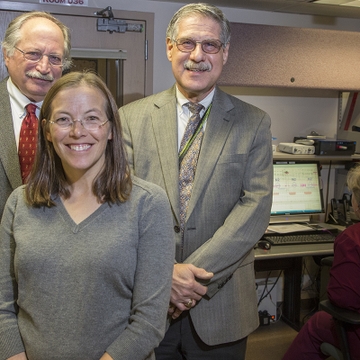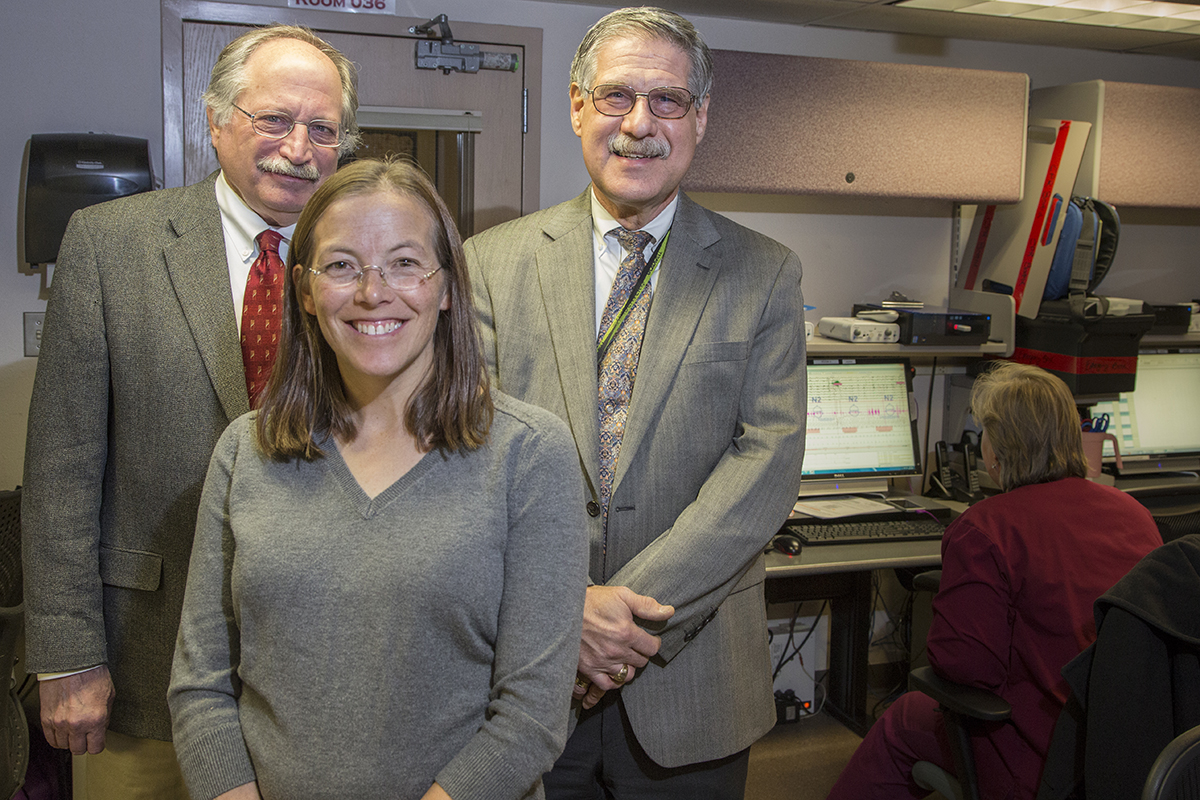
'Smart lighting' helps researchers study effects of light on sleep and health
University of New Mexico researchers recently completed installation of the nation's first hospital room equipped with "smart lights" capable of mimicking light from different times of the day.
The room at UNM Hospital can provide sleep medicine reserachers constant feedback on variables ranging from spectral content and intensity to body temperature and positions. Early studies using the new lab may determine whether "night owls" with delayed sleep-wake syndrome can be treated by varying the spectrum of light they are exposed to throughout the day.
"The new technology allows us to study classic circadian rhythm sleep-wake disorders as well as investigate the effect light plays on such behavioral health disorders as depression and dementia," said Lee K. Brown, MD, a UNM professor of internal medicine and medical director of the UNM Hospitals Sleep Disorders Center.
Other potential research areas for the specially equipped sleep lab include hospital-induced conditions such as post-operative delirium and ICU psychosis, as well as the effects of light on chemotherapy patients and behavior issues such as bipolar disorder and depression, Brown said.
The installation was funded by a National Science Foundation grant, said Steven R. J. Brueck, PhD, UNM Distinguished Professor Emeritus of Electrical and Computer Engineering. He is also UNM lead for the Smart Lighting Engineering Research Center and emeritus director of the UNM Center for High Technology Materials.
The system can collect feedback on variables ranging from the number and position of room occupants to the test subject's sleep and wake patterns, and it can even alert a nurse's station if a patient falls - all without the need for cameras, said Brueck.
"We believe this is the first hospital room where you can control light in a meaningful way," he said.
Meeko Oishi, PhD, associate professor in the UNM Department of Electrical and Computer Engineering and her research group worked with UNM health sciences faculty to customize the lighting system to fit HSC research needs. UNM is currently in the eighth year of participation of a ten-year, multi-university center program entitled "Smart Lighting Systems that See and Think." The university worked closely with Rensselaer Polytechnic Institute Smart Lighting Engineering Research Center in Troy, New York.
"In the future, everyone may have access to this technology," Brown said. "Knowing more about the effects of lighting may actually help physicians to prevent disease and increase productivity in healthy persons."
